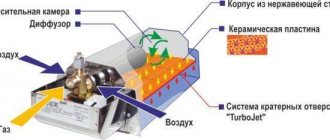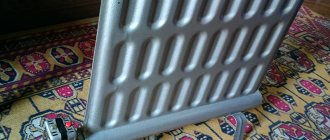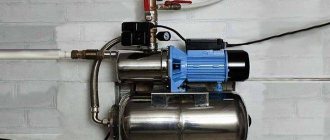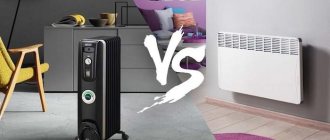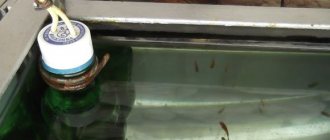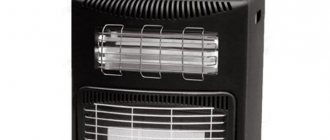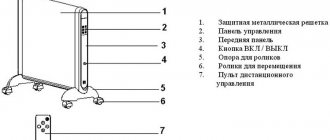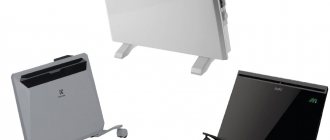Infrared ceiling heaters in the country
It is no secret that the most effective environmental heating system is the one used by Mother Nature herself. And for heating residential and industrial premises, an excellent alternative was found - ultraviolet heaters. They create a feeling of thermal comfort on the same principle as the sun. Let's look at how this happens.
What is ultraviolet?
Ultraviolet, or UV, radiation occupies the spectral range between visible and x-rays from 100 to 400 nm. Ultraviolet was discovered after the discovery of infrared radiation with shorter wavelengths, lying at the opposite end of the spectrum. The main source of ultraviolet radiation is the sun.
Depending on the wavelength, there are three ranges of ultraviolet radiation:
- UV-A (315-400 nm);
- UV-B (280-315 nm);
- UV-C (100-280 nm).
UV-C and 90% of UV-B rays are absorbed by ozone, water vapor, oxygen, and carbon dioxide. Only 90% of UV-B and UV-A rays penetrate the atmosphere.
Difference between UV and IR rays
Both rays are part of the solar spectrum, and belong to its invisible part. However, this is where the similarities between them end.
Almost half of solar radiation is infrared radiation. They are characterized by the fact that they are a source of strong thermal energy, which is emitted by all bodies heated by them, including the human body.
Ultraviolet light not only heats, but also has a photochemical effect. It is absorbed by nucleic acids, which leads to a change in the vital activity of cells - the ability to grow and divide.
Operating principle
Infrared heaters differ from convective heaters in their operating principle - they do not heat the surrounding air mass, the radiation heats objects in the area of operation of the unit. And the already heated floor, walls and furniture release heat into the air. Since solid bodies shield the waves emitted by the heater, the floor under the table in their path will not warm up, but the heated table itself will release the resulting heat in all directions. Although comparing infrared heaters with the sun is more of a marketing ploy, their radiation spectrum characteristics are similar.
The benefits of ultraviolet light
UV towel heater
Ultraviolet rays destroy certain types of pathogenic bacteria, viruses, and some fungi on different surfaces, in water and air. At the same time, UV radiation does not affect the habitat of these microorganisms.
Expert opinion
Grebnev Vadim Savelievich
Heating system installer
Infectious disease specialists warn that it is not always possible to achieve complete disinfection through UV radiation alone.
Other beneficial properties of ultraviolet radiation also include activation of the body’s production of vitamin D, which is critical for bone tissue. Radiation of this part of the light spectrum is necessary for the prevention of depressive conditions in people.
In addition, ultraviolet light, when used correctly:
- reduces blood viscosity;
- enhances microcirculation;
- strengthens the walls of blood vessels;
- reduces pain;
- improves the conductivity of nerve impulses, etc.
The opportunities that radiation provides are used to treat acute inflammatory skin diseases, purulent inflammations, etc. In such cases, ultraviolet irradiation (UVR) is prescribed.
This technology is also the basis for the operation of solariums, where you can get an artificial tan. Radiation is also used in dentistry to harden dental fillings.
Ultraviolet light is also used in other areas:
- mineral analysis;
- spectrometry;
- catching insects;
- restoration;
- chromatographic analysis;
- printing.
UV radiation in moderate doses is necessary for vegetation. But the flora dies from its excess.
Classification of species
There is only one type of ultraviolet heater, which is familiar to almost every person. This is a blue lamp that is used to treat diseases such as runny nose or ear problems.
The equipment is used not only as heating for the room, but also for drying shoes.
You can also find more specific models of ultraviolet lamps - medical ones.
According to the functionality of the equipment, ultraviolet lamps are divided into several groups:
- Open type. The lamps are inserted into the housing and have a low power, and with the help of them the premises are disinfected. An important nuance - before use, it is necessary that all people, animals and plants are in a safe area.
- Closed type. Powerful light bulbs are installed in a special insulated chamber, with the help of which the disinfection process occurs.
- Special appointment. These lamps are low power and are used for a variety of physical therapy needs that can even be used at home.
Closed type ultraviolet lamp
Also, ultraviolet heaters are classified into several types according to the method of execution:
- Stationary samples.
- Tripod version.
- Compact and portable.
Harm from ultraviolet radiation
Radiation can negatively affect the condition of various objects made of polymers. Under its influence, various surfaces become dull, crack, and can be destroyed - this phenomenon is called UV aging. The longer objects are exposed to ultraviolet radiation, the sooner their properties are lost.
Susceptible to UV radiation:
- polypropylene;
- polyethylene;
- polymethyl methacrylate, or organic glass;
- aramid fibers, including Kevlar.
To prevent materials from deteriorating, substances are added to the raw materials that make the products resistant to such effects.
Ultraviolet radiation also has a detrimental effect on human health:
- when the skin's natural protective ability to tan is exceeded, burns occur;
- mutant cells are formed, resulting in the development of melanoma;
- intense radiation leads to radiation damage to the cornea (electroophthalmia).
Expert opinion
Grebnev Vadim Savelievich
Heating system installer
To protect the body from ultraviolet radiation, creams, eye lenses and glasses with UV filters are produced.
Is there ultraviolet heating?
The answer is clear - no, unlike infrared. But ultraviolet light still found application in everyday life.
"Blue" lamp
The device is also called the Minin reflector, named after the Russian military doctor who first used ultraviolet light to treat patients.
Lamps are still used today for the complex treatment of various diseases of the skin, nasopharynx, ear, etc. - for ARVI, otitis, sinusitis, etc. For treatment, the lamp is directed to the problem area. The rays increase the temperature of tissues and destroy pathogenic microflora. After a course of procedures, pain decreases and inflammation decreases.
Until the early 40s of the last century, a Minin lamp was in almost every home. Such popularity of the physiotherapeutic method was explained by the absence or shortage of necessary medications. But after antibiotics and sulfonamides became widely used, the popularity of the device began to decline.
Shoe dryer
Ultraviolet shoe dryers are gradually becoming as common a gadget as blue lamps once were.
They are lasts that are inserted into shoes. They contain a heating element powered by electricity and a UV lamp.
Manufacturers claim that in addition to drying wet shoes, such devices disinfect the lining and insole, destroying all types of fungi, and eliminating unpleasant odors.
Towel warmers
Ultraviolet towel heaters are installed mainly in modern spa salons. They allow you to disinfect textiles used for compresses, rubbing, pedicures, etc.
Recently, smart gadgets have appeared on sale. They have built-in sensors that react to a person and turn off the ultraviolet light if the distance between him and the device is reduced to 2.5 m.
Similar equipment with an ultraviolet disinfection function is used for other accessories that come into contact with skin, hair, nails - brushes, sponges, combs, etc., which cannot be disinfected with chemicals and high temperatures.
UV sterilizer for aquarium
The device is installed in aquariums to purify water from harmful organisms. An ultraviolet sterilizer is a small cylinder on the surface of which there are two tubes - inlet and outlet. Through the first, water enters the cylinder and is exposed to UV irradiation; through the second, it exits purified. Such sterilizers are effective only in fresh water and only in small aquariums.
UV lamps for mosquitoes
Ultraviolet light is also used in the fight against mosquitoes, since this range of the spectrum attracts insects. When mosquitoes fly up to the device, they land on the grille that surrounds the housing. An electric current is connected to it, destroying insects.
Ultraviolet devices are a useful gadget in the home when it comes to disinfection and treatment. But you cannot use them as a heater for heating rooms, since it can harm your health.
How to choose a ceiling heater
The choice of a specific model and heating method depends on the size of the room and the state of insulation of the house. If the dacha is built according to the classic scheme with two rooms and a small hallway, then it is best to use a combined ceiling heater.
For example, to quickly warm up a house in winter, an infrared propane burner is best suited; its power, which is quite a lot, 5-10 kW, will be enough to heat and dry the room within 10-15 minutes. An electric or infrared heater can achieve the same result in 2-3 hours of operation.
On the other hand, to heat the front door, threshold and corridor, it is better to choose an ultraviolet or infrared device. If the cottage is built from rounded logs or, even more so, timber, then it is best to choose an ultraviolet heater. It will not only maintain the necessary thermal conditions, but will also protect the wooden box from rotting and the spread of fungus.
This is one of the reasons why summer residents prefer to buy ultraviolet heaters. With their help, it is possible to disinfect and preserve not only the wooden box of a country house, but also a bathhouse, and a storage area for vegetables and harvested crops.
Industrial infrared ceiling heaters
To heat a summer house or a small room in a cottage, you can use an industrial heater, for example, the most affordable version of the B12M propane-butane burner. Device power 5.6 kW, direct power from a cylinder with a reducer. More powerful gas and infrared heaters of the GIIAP type, producing up to 10 kW of thermal power, are usually used for heating greenhouses and greenhouses.
Ceiling heater GII-20
Important! It is also possible to heat a dacha or country house; the power of the heat flow is such that the heater must be located at a height of at least 4-5 m on a separate ceiling mount. Otherwise, the floor and furniture will burn.
A simpler option is a standard flameless burner or MIP heater made in Turkey with a power of 3 kW. Gas consumption is 0.4 l/h, which means that a 25-liter cylinder is enough for two days of continuous burning.
Ceiling heaters for home and garden
Different types of country houses require different heating systems. For example, for a timber frame cottage, you can use a simple infrared heater.
Ceiling UV heater in greenhouse
An ultraviolet heater can be purchased as an additional heat source. If a winter greenhouse is attached to the house, then it will be useful to install the device on a ceiling beam for several hours. Ultraviolet light will not lead to melting of the frame film and is guaranteed to support seedlings on cold days, and when combined with an automatic temperature control, it will be indispensable in the most extreme cold.
For stone cottages that do not have winter insulation and heating, it is better to use a gas ceiling heater based on a flameless burner. When handled correctly, its power will easily exceed the capabilities of a wood-burning stove, and the stability and reliability are noticeably higher.
